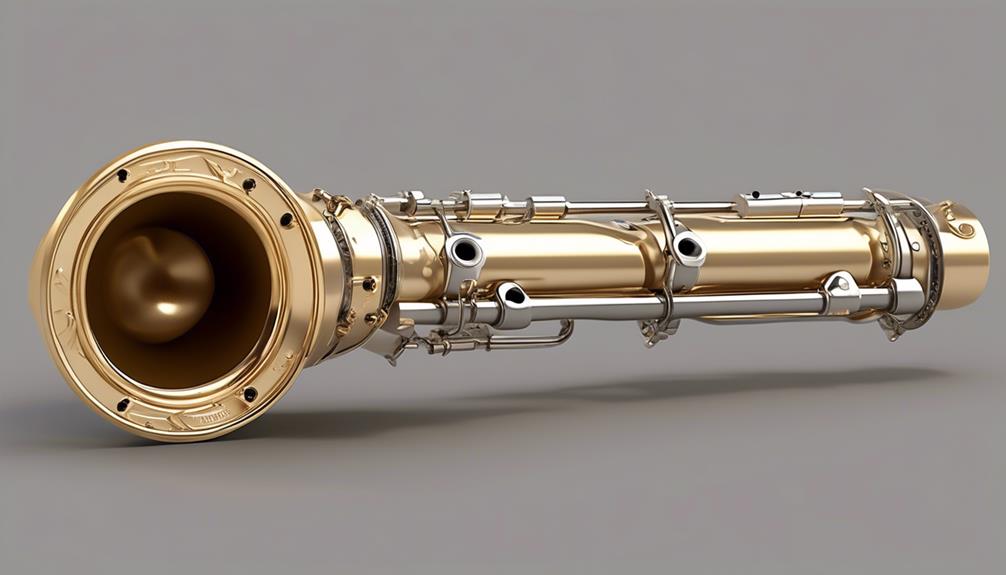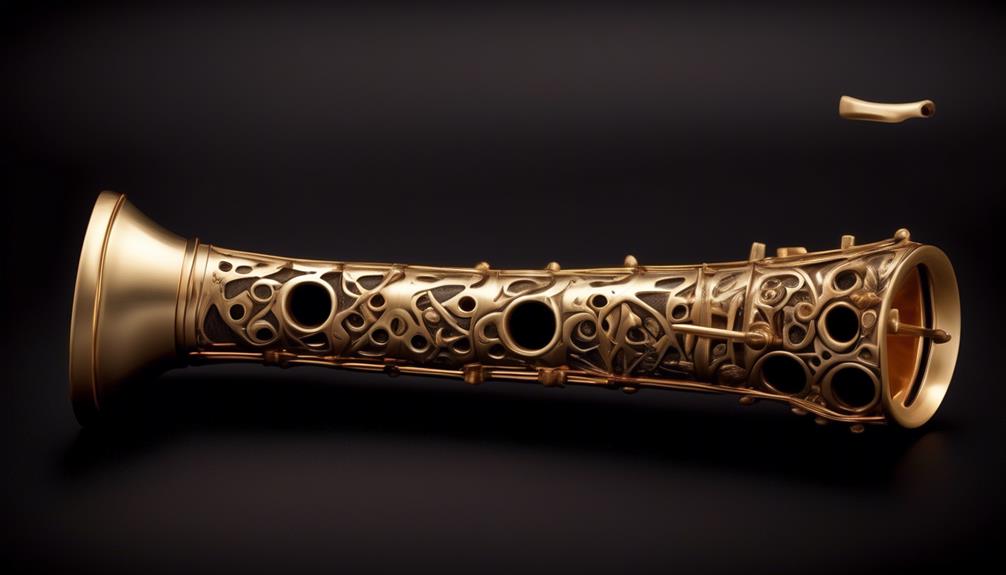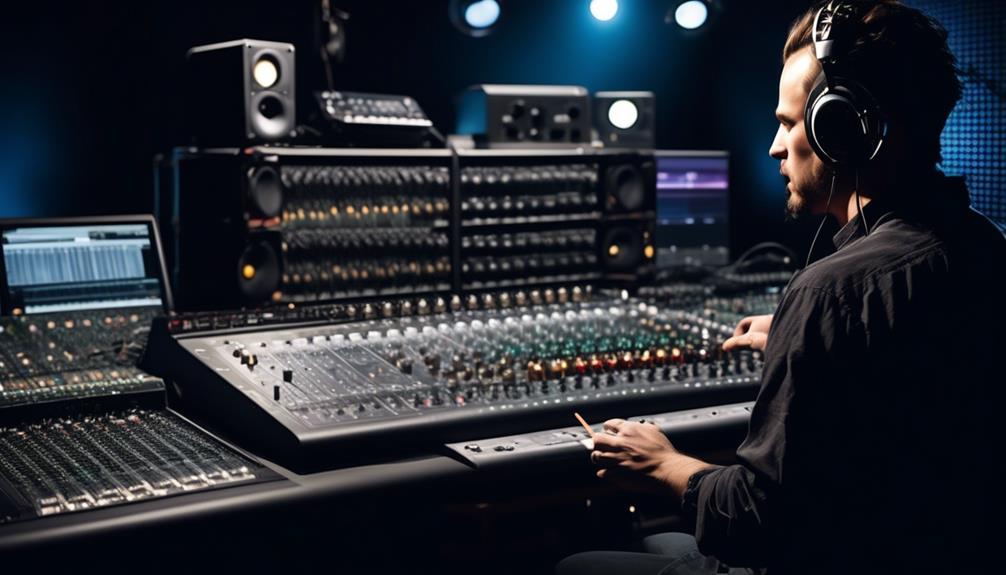Have you ever questioned where the sound from the recorder originates, akin to a whisper slipping through a keyhole? The response may catch you off guard.
The recorder may seem simple, but its anatomy and design play a crucial role in sound production. Understanding the intricate components of the head joint, body joint, and foot joint can provide insight into the mechanism behind the beautiful melodies that emanate from this deceptively complex instrument.
Key Takeaways
- The sound of a recorder emerges from the window gap on the head joint.
- The windway directs the breath towards the window gap, causing vibrations.
- The vibrations are produced when the air stream moves over the labium.
- The sound resonates and emerges from the bell of the foot joint for extra resonance.
Anatomy of a Recorder
Exploring the anatomy of a recorder reveals the essential components responsible for creating its distinctive sound. The three main parts, the head joint, body joint, and foot joint, work together to produce the beautiful sound of the recorder.
The primary part where sound is created is the head joint. It contains the windway, block, mouthpiece, window, and labium, all of which are crucial for sound production.
Moving on to the body joint, it's the largest part and contains most of the tone holes that control the pitch. These include a thumb hole, single-tone holes, and double holes at the end.
Finally, the foot joint, the smallest part, has a bell shape and typically features one tone hole and a hole at the very bottom.
The recorder produces sound through the interaction of the air jet with the air column in the bore. As air vibrations create sound waves, the different register divisions allow for a wide range of notes.
Understanding the intricate parts of the recorder is essential for mastering its sound and playing techniques.
Head Joint Components

How do the components of the head joint work together to produce the sound of a recorder?
The head joint of a recorder is crucial to producing the beautiful sound that comes out of the instrument. When we blow into the recorder, the stream of air enters the head joint and encounters several key components that contribute to the production of sound.
These include the windway, mouthpiece, block, window gap, and labium.
- The windway is where the player blows into the recorder, directing the air towards the window gap.
- The mouthpiece, or beck, is where the player places their mouth to blow air into the recorder head.
- The block shapes the windway and focuses the air to produce a clear sound.
- The window gap, a square hole on the top part of the recorder head, is where vibrations occur as the air stream moves over the labium.
- The labium, the sharp front bottom edge of the window gap, causes the air to split and produce vibration, which then travels into the sound chamber, ultimately resulting in the sound that comes out of the recorder.
Understanding how these head joint components work together is essential for mastering the recorder, as it allows players to control the air resistance and produce the desired tones.
Body Joint Structure
The body joint of a recorder is the long middle section of the instrument that contains most of the tone holes. This section plays a critical role in producing sound. When playing, the left hand covers the tone holes on the body while the right hand covers the holes on the foot joint. By uncovering and covering these holes, the pitch of the sound is controlled. The column of air inside the body joint interacts with the air directed into the recorder from the windway, creating vibrations that produce the sound. Moreover, the thumb hole at the back of the body joint also affects the pitch of the sound. To illustrate the importance of the body joint structure, consider the following table:
| Recorder Part | Function | Interaction with Sound |
|---|---|---|
| Body Joint | Contains tone holes | Controls pitch |
| Left Hand | Covers body joint holes | Alters sound pitch |
| Right Hand | Covers foot joint holes | Adjusts sound pitch |
Understanding the body joint structure is crucial for mastering the recorder, as it directly influences the produced sound.
Foot Joint Functionality

Nearing the end of the recorder, the foot joint serves as the point where the air and sound exit the instrument, playing a critical role in determining the overall pitch and tonal production. The functionality of the foot joint is crucial in the production of sound in a recorder.
Here's why:
- The foot joint contains one tone hole and a hole at the very bottom, regulating the airflow and contributing to the production of sound.
- It's usually adjustable to align the final tone hole with the pinky finger for comfortable playing, allowing for ease of use and ergonomic design.
- The foot joint has 1 thumbhole and 6 tone holes, which can be adjusted for pitch alterations, giving the player control over the recorder's pitch and tonal range.
- As the end of the recorder, it's where the air and sound exit the instrument, making it a crucial component for sound production.
- The foot joint plays a crucial role in the overall pitch and tonal production of the recorder, affecting the quality and characteristics of the sound produced.
Understanding the functionality of the foot joint is essential for mastering the recorder, as it directly impacts the sound and performance of the instrument.
Sound Production Mechanism
Understanding the functionality of the foot joint is essential for mastering the recorder, as it directly impacts the sound and performance of the instrument.
When it comes to the sound production mechanism of the recorder, the window gap located on the top part of the recorder's head joint is where the sound emerges. The mechanism involves the windway, a small hole at the tip of the head joint, which directs the breath to the window gap where vibration occurs.
This vibration is created when the air stream moves over the labium, the sharp front bottom edge of the window gap, causing the sound to come out. Additionally, the sound resonates and emerges from the bell, the bottom section of the recorder, providing extra resonance and comfort for the player.
Moreover, the air jet interacts with the air column in the instrument's bore, and the air column vibrates lengthwise along the bore, creating sound that emerges from the recorder.
Understanding these parts and the mechanism behind the sound production makes it easier to play the recorder and achieve mastery of this beautiful instrument.
Frequently Asked Questions
What Makes the Noise in a Recorder?
Air vibration within the recorder's air column, finger placement, and breath control are vital for sound production. The instrument mechanics involve the air jet interacting with the air column, creating vibrations for tone quality.
The embouchure technique affects the vibrations as well. Understanding these elements is crucial for mastering the recorder and producing beautiful music.
What Is the Science Behind the Recorder?
Sound production in a recorder involves controlling air pressure and finger placement to manipulate the vibrating air column inside the instrument. The embouchure technique, along with the recorder's construction, influences the production of sound waves.
The acoustic resonance, particularly from the bell, enhances the sound. Understanding the science behind the recorder is crucial for mastering this musical instrument and achieving a wide range of notes and tones.
Why Is There a Hole on the Bottom of a Recorder?
The hole on the bottom of a recorder is crucial for sound production. When wind pressure is directed into the instrument, the air stream travels through the windway and over the labium, causing acoustic resonance. This design, similar to a flute mechanism, is fundamental to woodwind construction.
The sound hole, positioned at the bottom, plays a key role in the overall performance of this musical instrument.
What Are the Three Parts of a Recorder?
The three parts of a recorder are the head joint, the body, and the foot joint. These parts are crucial for creating sound on the instrument.
The head joint is where the sound is produced, while the body and foot joint contribute to the instrument's construction and tone production.
Understanding their roles is essential for mastering fingering positions, breath control, and proper air flow.
Learning about the recorder anatomy is key for sound production and instrument maintenance.
Conclusion
In conclusion, the recorder produces sound through the combination of the head joint, body joint, and foot joint, which work together to create different air columns and produce a wide range of notes.
The sound that comes out of a recorder is like a musical conversation, with each note speaking its own unique language and adding to the overall melody.
Just like a storyteller weaving a tale, the recorder uses its components to create a beautiful musical story.










